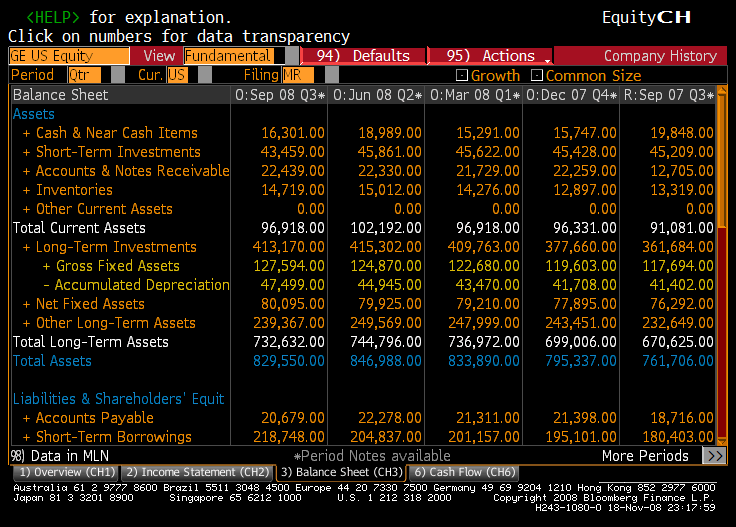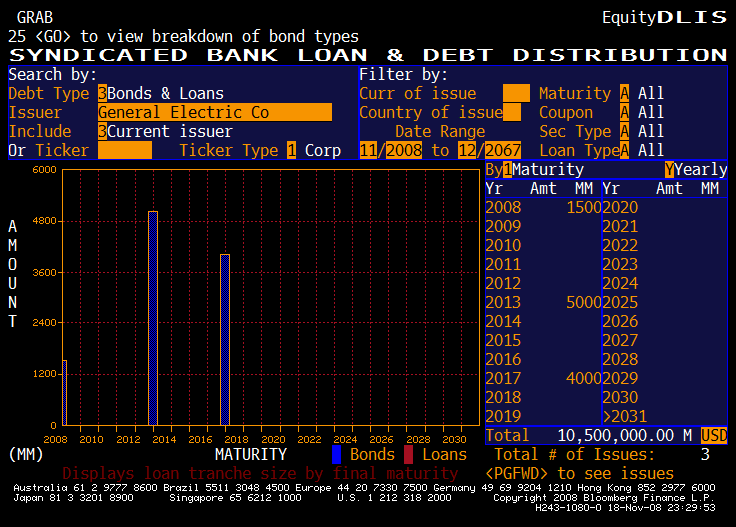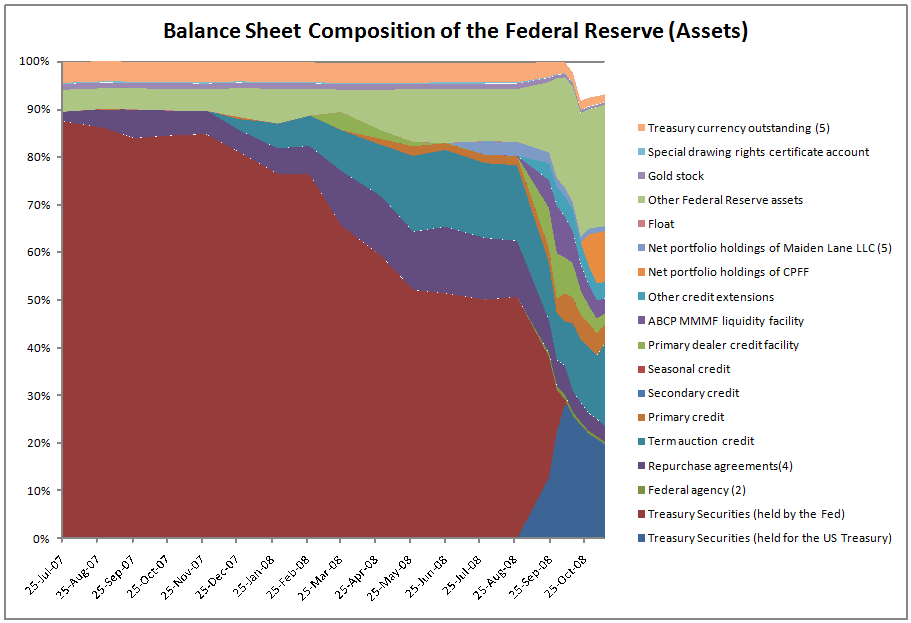Broken…
Things have been bad in the bond market of late, but many amazing things happened in the bond market yesterday.? I printed out a number of screens from my Bloomberg terminal near 4PM yesterday:
And this blast from the past:
It is hard to convey the depth of the panic gripping the bond market of late, but when t-bills are priced at less than 10 bp of yield, and the 30-year bond rallies almost 9 bucks (46 bp) in one day, that says a lot.? The last graphic above is from Black Monday, when the stock market crashed in 1987.? The move in T-bonds was even greater than that day in spread terms, which is pretty astounding, because ther was a lot more spread to grab in 1987.? In dollar terms, that was a $3+ move, so the move today was unprecedented.
Also consider that 30-year TIPS fell at the same time as the large move up in nominal bonds.? Inflation protection is being given away for free in some cases (zero for 10 years), at very nominal fees in other cases (0.7% for 30 years), and being paid in other cases (-0.5% for 5 years).? The forward inflation curve looks pretty bizarre.? If I can find time, perhaps I can put up a graph.
Away from that, 30-year swap spreads closed near -60 basis points.? Swap rates are supposed to be similar? to where AA banks borrow/lend, so something is broken here.? My suspicion is that long duration managers (pension plans, life insurers) have for some reason felt forced to buy fixed-rate? promises through the swap market, rather than buying zero coupon bonds, the longest of which yield more than 3.5%, considerably more than swap rates.? Anyone holding a position to receive 30-yr fixed, pay floating saw it appreciate by 9-10%, which is pretty amazing.
Many of the rates on the Treasury curve are record low yields as far as I can tell. This contrasts against all of the other bond markets, including agencies, where rates are significantly above Treasuries.? Investment grade and high yield bond spreads are at record levels.? My view is that they should be bought selectively, realizing that purchasing power in this market is supreme, and not give it up easily.
Read Across the Curve for how investment grade corporate spreads are moving out.? CMBS spreads have gotten destroyed.? If I were running life insurance money, and my client felt his liabilities could not run, I would be buying AAA CMBS hand over fist, carefully selecting older deals with better credit quality.? That said, you can see the effects of the carnage in the shares of life insurers, which are the biggest providers of long-term credit.? (ouch with tears)
There are still more oddities to the current bond market, most of which involve parties that can’t take certain risks any more.? We can expand that to banks, and toss in Citi.? Citi is trading like it is going out of business.? Now, Citi is one of the “too big to fail” [TBTF] banks, along with JP Morgan, Bank of America, and Wells Fargo.? If they are in trouble, I’m not sure who can buy them; they would probably be too much for even a coalition of the other TBTF banks to handle.? Is there a foreign bank that wants them?? I doubt it.? This would be another area where a new TBTF chapter of the bankruptcy code would be useful.
I’ll have a more detailed response to my piece, It’s Called a Depression later.? I would say that I found the commentary interesting, particularly the places where some suggested that:
- I focused too much on financials.
- Negativity itself is the problem.
- Why don’t you focus on what’s going right?
Aside from the Great Depression, every other recession since that time, the banks, insurers, etc., may have had a large subset under stress, but not to this degree.? Our economy is credit-based, and the amount of credit is a record multiple of GDP.? That credit in the past greased the gears of non-financial companies.? The troubles in financials is affecting the whole economy.? There will be a sustained decline in demand, because much of the prior demand relied on the ability to borrow.
I have long felt that this is no “crisis of confidence” as many in the government will say.? Rather, it is a realization that when one marks many positions to their market clearing levels (at a lower degree of leverage for the financial system as a whole), that many financial institutions are insolvent.? The government can try to reflate the bubble but it is too small to do so.? Reflating bubbles is not generally achievable, anyway, because the negative dynamics around the old deflating bubble preclude it.? Typically we blow a new bubble instead.
Now, I try not to be controversial.? I don’t like trotting out words like Depression or Stagflation for their shock value.? I bring them out when I think they can be useful in clarifying the situation at hand.? I am not a doom-and-gloomer? by nature.? I would much rather be running my “long only” equity portfolio during a bull market.? Relative performance, at which I have done well, is nice, but nothing beats absolute performance.
Ask yourself, though.? If you were at the start of a new depression, what would it look like?? My list yesterday is an example of what I think it would look like.? Given the freeze-up in lending where the government has not intervened, such as A2/P2 commercial paper and corporate bonds, this is a situation where problems in financials are spilling over to nonfinancials.
Now, as for what is going right, I invite readers to offer their ideas.? Please comment.? I will offer four:
- Residential mortgage rates are declining a little (though rates are above the levels when Bernanke and Paulson introduced their “scare tactics.”)
- The dollar is performing well.
- The US government can borrow at amazing rates. (That no one else can touch, unless you are a long term swap counterparty…)
- Commodity prices are falling, hard.
These are all consistent with a depression scenario.? Demand for safety, and lack of global demand for the basics.? That said, it is a lot more pleasant filling up my tank.
In closing, as some of my older friends who have passed on once said to me, “If the locusts eat your crop, at least you don’t have to harvest.”? This is true, but cold comfort.? I would be happier with the economy that I argued was unsustainable for so long.
PS — As an aside, the government, by protecting some sectors of lending, has intensified the crisis in theareas it did not protect.? The rally in nominal Treasuries is a grab for safety at any price.? The crash in corporate bonds is the opposite.? Money runs (so to speak) from unprotected to protected sectors in a crisis, and so, the government helps create crises, and diminishes liquidity by protecting some favored sectors of fixed income.


















